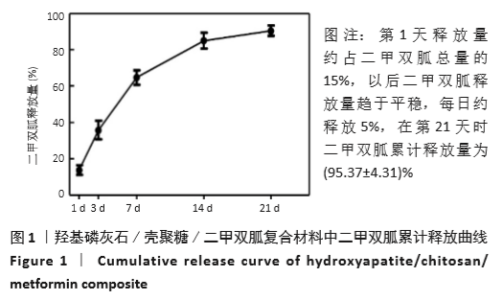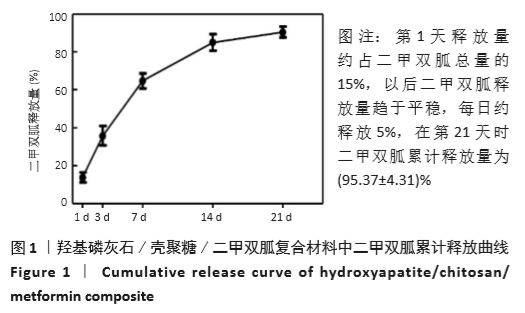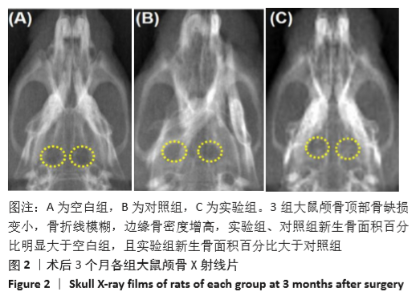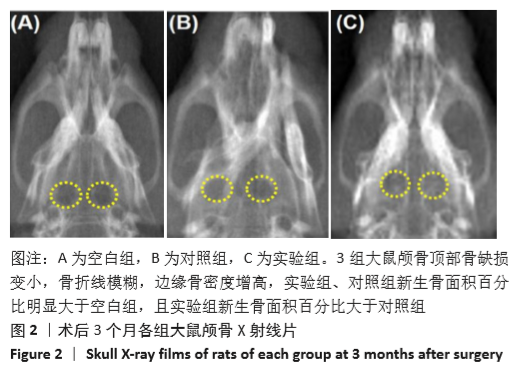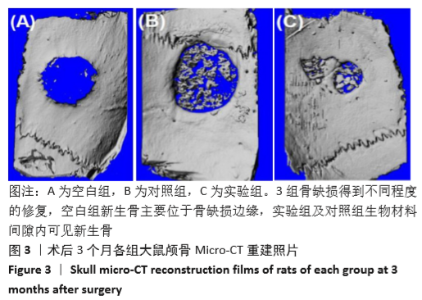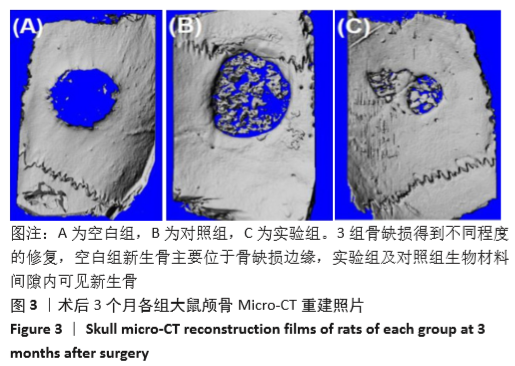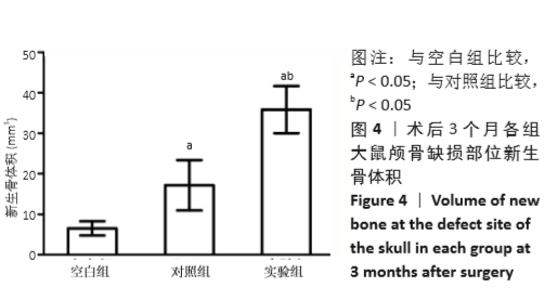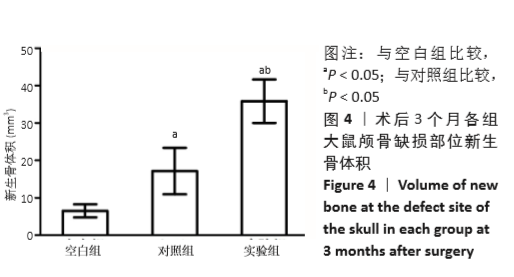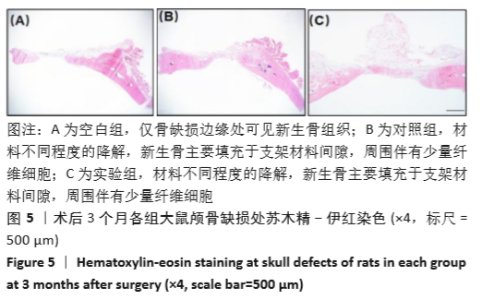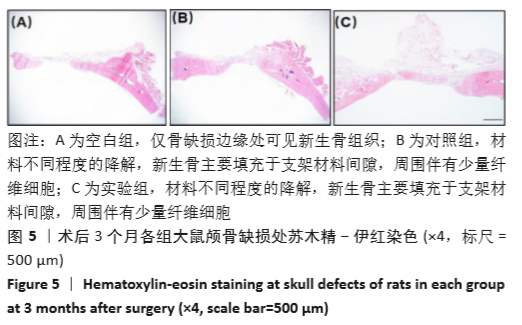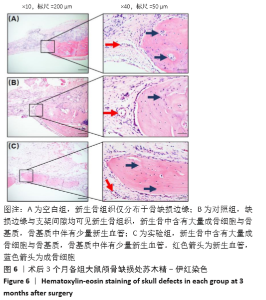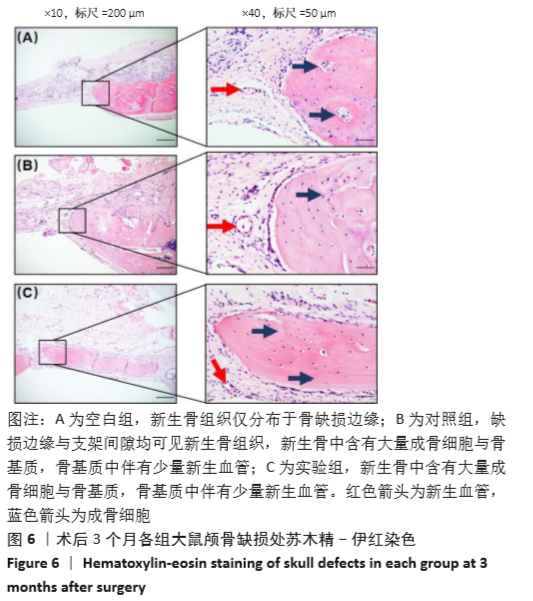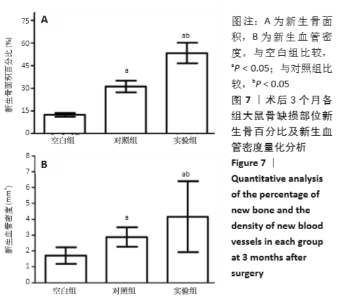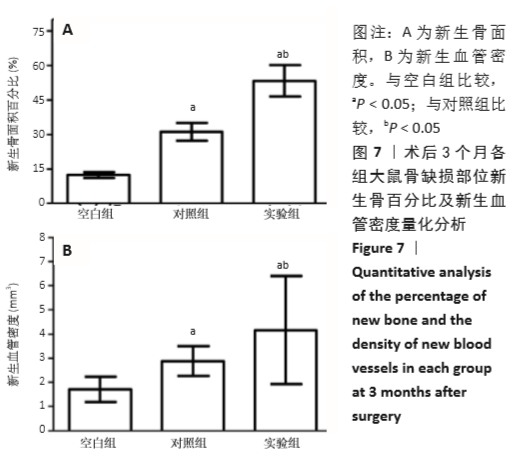[1] PREETHI SS, HARITHA MA, VIJI CS, et al. Bone tissue engineering: Scaffold preparation using chitosan and other biomaterials with different design and fabrication techniques. Int J Biol Macromol. 2018; 119:1228-1239.
[2] GARCÍA-GARETA E, COATHUP MJ, BLUNN GW. Osteoinduction of bone grafting materials for bone repair and regeneration. Bone. 2015;81: 112-121.
[3] QUARTO R, GIANNONI P. Bone Tissue Engineering: Past-Present-Future. Methods Mol Biol. 2016;1416:21-33.
[4] GRANITO RN, MUNIZ RA, YAMAMURA H, et al. Hydroxyapatite from Fish for Bone Tissue Engineering: A Promising Approach. Int J Mol Cell Med. 2018;7(2):80-90.
[5] DENG N, SUN J, LI Y, et al. Experimental study of rhBMP-2 chitosan nano-sustained release carrier-loaded PLGA/nHA scaffolds to construct mandibular tissue-engineered bone. Arch Oral Biol. 2019;102:16-25.
[6] CUI Z, KIM S, BALJON JJ, et al. Microporous methacrylated glycol chitosan-montmorillonite nanocomposite hydrogel for bone tissue engineering.Nat Commun. 2019;10(1):3523.
[7] NOORI A, ASHRAFI SJ, VAEZ-GHAEMI R, et al. A review of fibrin and fibrin composites for bone tissue engineering. Int J Nanomedicine. 2017;12: 4937-4961.
[8] BALAGANGADHARAN K, DHIVYA S, SELVAMURUGAN N. Chitosan based nanofibers in bone tissue engineering. Int J Biol Macromol. 2017;104(Pt B): 1372-1382.
[9] WANG P, MA T, GUO D, et al. Metformin induces osteoblastic differentiation of human induced pluripotent stem cell‐derived mesenchymal stem cells. J Tissue Eng Regen Med. 2018;12(2):437-446.
[10] SHAHREZAEE M, SALEHI M, KESHTKARI S, et al. In vitro and in vivo investigation of PLA/PCL scaffold coated with metformin-loaded gelatin nanocarriers in regeneration of critical-sized bone defects. Nanomedicine. 2018;14(7):2061-2073.
[11] ZHAO Z, LIU J, SCHNEIDER A, et al. Human periodontal ligament stem cell seeding on calcium phosphate cement scaffold delivering metformin for bone tissue engineering. J Dent. 2019;91:103220.
[12] 周琳,杨明理,曾春平,等.盐酸二甲双胍抑制破骨细胞分化的研究[J].中国骨质疏松杂志,2020,26(5):650-654.
[13] 刘畅,刘亭亭,缪婧,等.二甲双胍对骨代谢的影响[J].中华骨质疏松和骨矿盐疾病杂志,2019,12(5): 532-537.
[14] 施松青,邵永科,余金聪,等.不同剂量二甲双胍用于2型糖尿病合并膝关节骨关节炎的临床效果观察[J]. 现代实用医学,2018, 30(10):1280-1282.
[15] VAN HOUDT CIA, GABBAI-ARMELIN PR, LOPEZ-PEREZ PM, et al. Alendronate release from calcium phosphate cement for bone regeneration in osteoporotic conditions. Sci Rep. 2018;8(1):15398.
[16] CHEN C, CHANG N, WU Y, et al. Bone Formation Using Cross-Linked Chitosan Scaffolds in Rat Calvarial Defects. Implant Dent. 2018;27(1): 15-21.
[17] THRIVIKRAMAN G, ATHIRASALA A, TWOHIG C, et al. Biomaterials for Craniofacial Bone Regeneration. Dent Clin North Am. 2017;61(4): 835-856.
[18] Shahrezaee M, Salehi M, Keshtkari S, et al. In vitro and in vivo investigation of PLA/PCL scaffold coated with metformin-loaded gelatin nanocarriers in regeneration of critical-sized bone defects. Nanomedicine. 2018;14(7):2061-2073.
[19] 刘冬,秦虎,汪永新,等. 3D打印羟基磷灰石/聚乳酸网状复合物修复颅骨缺损[J].中国组织工程研究,2019,23(6):833-837.
[20] QIN W, CHEN J, GUO J, et al. Novel Calcium Phosphate Cement with Metformin-Loaded Chitosan for Odontogenic Differentiation of Human Dental Pulp Cells. Stem Cells Int. 2018;2018:1-10.
[21] VIEIRA S, VIAL S, REIS RL, et al. Nanoparticles for bone tissue engineering. Biotechnol Prog. 2017;33(3):590-611.
|
